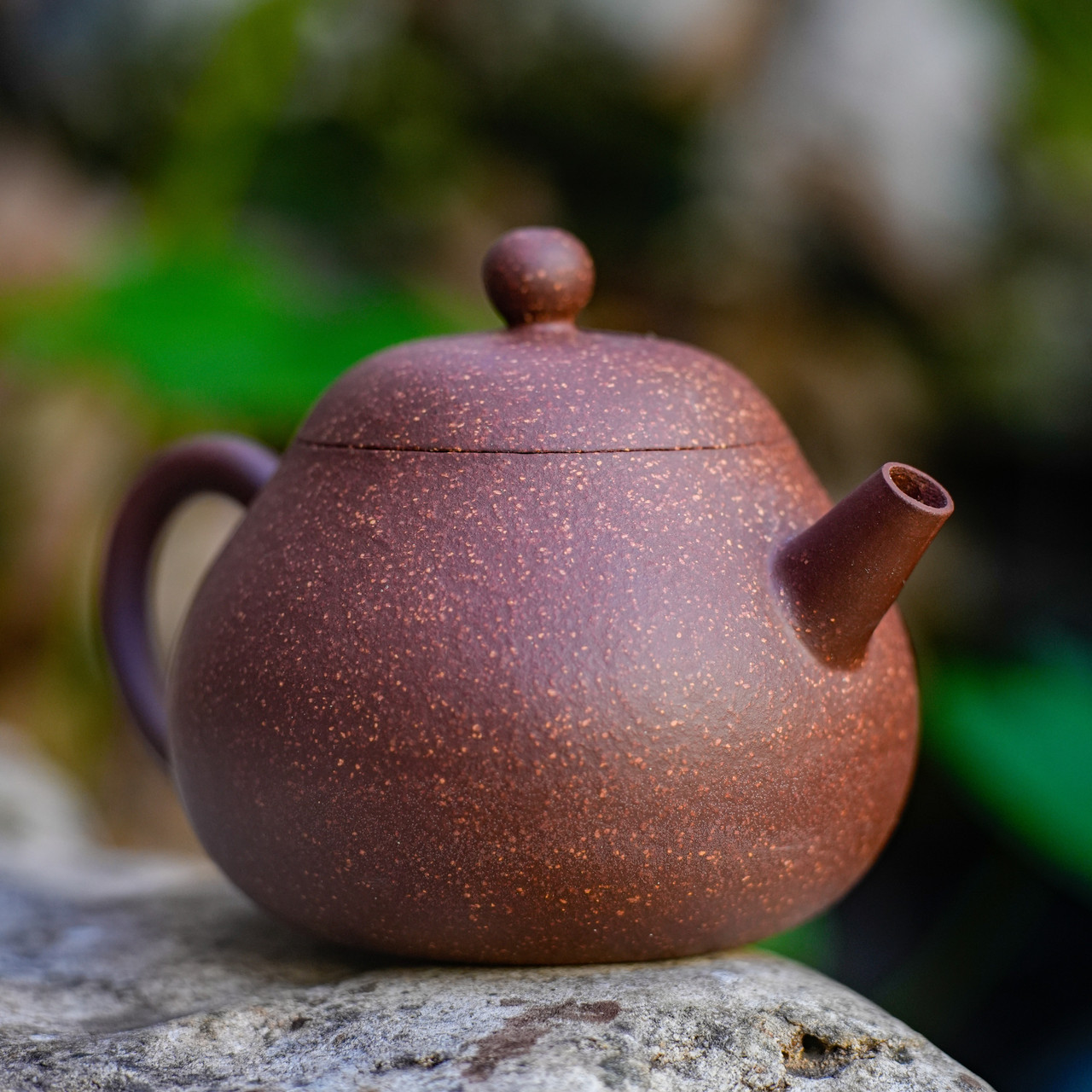Many people are interested in choosing a Yixing clay teapot, but don’t know where to start…
So we wanted to share a few important factors to consider:
- The Clay Body. You can choose to steep tea in any kind of vessel, including porcelain, glass, unglazed clay, or otherwise. One reason that Yixing clay is special, is because of its mineral content. The semi-porous, unglazed stoneware clay interacts with your tea, and can improve or balance the brew. Additionally, Yixing clay is said to have a higher heat retention and is more suitable for steeping certain higher oxidation teas.
- Authenticity. Like all rare and precious things, Yixing teapots are commonly counterfeit - meaning made from non-Yixing clay, in an anonymous factory, not by a master. One trademark is that authentic Yixing pots typically have a bumpy and imperfect texture. A handmade pot will also lack any visible center lines that are seen when clay is joined together with molds.
- Types of Tea. Due to the porosity of the clay, tea solutes build up in the teapot over time. Therefore, many people choose to devote their teapot to a single type of tea. If you choose to do this, it’s important to consider which types of tea you’ll be consuming most. Yixing teapots tend to favored for Sheng Pu’er, Shou Pu’er, Oolong, Aged White Teas, and Red Teas most - but this is of course your personal preference.
- Capacity. When steeping tea using Gong Fu Cha techniques, we are making several short infusions. It’s common to use around 5g of tea for every 100 ml of water. If you’re primarily steeping tea for yourself, a smaller teapot of ~100 ml may be preferred. For bigger groups, a larger pot of up to ~200 ml may be more desirable.
- Craftsmanship. Teapots can be fully handmade (produced with handbuilding or ceramic wheel techniques), half handmade (produced with the assistance of molds), or slip cast (produced entirely with molds). These factors can influence the price, quality of the teapot, the functionality, and otherwise.
- Ergonomics. Teapots come in a variety of sizes, shapes, and weights. Some of which may feel more comfortable to use in your hands.
- Aesthetics. Do you enjoy the color, look, texture, and shape? Do you prefer intricate designs or carvings?
- Functionality. A larger lid/opening may be more desirable for looser, fluffier tea leaves. And, different spout designs may influence how fast the water can be poured and decanted.
This is not a comprehensive list and there are other factors to consider, but the most important factor is your own personal preference.
If you’re interested in learning more about different clay types and teapots, check out our Youtube video here.
And if you’re ready to choose a teapot, we currently have a limited amount of fully handmade Yixing Teapots available…
All of which are produced by one man, Master Cheng Zhu.
Master Cheng Zhu is a native of Chaozhou and an accomplished ceramicist in the Chaozhou Shoula Hu teapot tradition. He has spent years in Yixing, studying the traditional hand-building techniques and making connections with purveyors of authentic Yixing clay.
We currently have a few different traditional shapes of Yixing pots, composed of different clay compositions.
>>>Click here to explore all Yixing Clay Teapots
Have a question? Email and let us know.
West China Tea
| |

|
| Gold Bell Yixing Clay Teapot 德钟壶 |
|
|
|
| |

|
| Sandy Dragon Egg Yixing Clay Teapot 龍蛋宜興朱泥茶壺, |
|
|
|
| |

|
| Pear Yixing Purple Sand Clay Teapot 梨宜興陳紫砂茶壺 |
|
|
|
| |
| |
"When I drink tea
I am conscious of peace
The cool breath of Heaven
rises in my sleeves, and
blows my cares away"
-- Chinese Poet Lutong
We love connecting with you all!
Join us on meet.westchinatea.com for chat and message boards, or respond to this email with any questions.
Are you interested in text updates ?
Text VIP to +1 (629) 348-8267 and get 10% off your next order, or tap here on mobile | |
|
|
|